 May 16, 2019 John E. Ross, KD8IDJ, Editor
| ||||||
ARRL Invites Applications for Volunteer Monitor Positions ARRL is now accepting applications from individuals interested in becoming part of the new Volunteer Monitor program, a joint undertaking of the FCC and ARRL. The program seeks volunteers who -- working under the direction of ARRL -- will monitor and survey the Amateur Radio bands both to detect improper activity and to recognize exemplary on-the-air behavior.
Volunteer Monitors will serve 3-year terms at the pleasure of ARRL, and ARRL will reserve the right to terminate the participation of any Volunteer Monitor for any reason. Volunteer Monitors must be able to utilize state-of-the-art receiving equipment and to access no-cost remote receive sites, if requested. Applicants must possess strong writing and communication skills and an understanding of the importance of thorough documentation. They must have basic word processing and data entry skills and be able to send such information, including recordings, to ARRL electronically. Applicants must have no history of warning letters or other enforcement-related action from the FCC, must hold a Technician or higher class license, and must have been licensed for at least 3 years. Applicants should send applications to [email protected] for processing. In February, Riley Hollingsworth, K4ZDH, was named to oversee the development and implementation phases of the Volunteer Monitor program, which will replace the Official Observer (OO) program. Hollingsworth once handled Amateur Radio enforcement for the FCC. FCC is Not Reinstating a Vanity Call Sign Fee An erroneous report this week suggested that the FCC planned to again impose an Amateur Radio vanity call sign application (regulatory) fee of $70 for the 10-year term. This incorrect conclusion resulted from an incomplete reading of the May 7 FCC Notice of Although the Schedule of Regulatory Fees does show a $7 annual fee for Amateur Radio vanity call signs, a boldface heading in that section of the NPRM states, "REGULATORY FEES. This section is no longer in effect as it has been amended by RAY BAUM'S Act of 2018..." Section 9(e)(2) of RAY BAUM'S Act gives the Commission discretion to exempt a party from paying regulatory fees when the FCC determines that the cost of collection exceeds the amount collected. A new section 9(e)(1) incorporated the Amateur Radio vanity fee exemption from FCC rules into the statute. The NPRM makes clear in several other places that regulatory fees no longer apply to Amateur Radio licenses. The FCC eliminated the regulatory fee for Amateur Radio vanity call signs in 2015.
Radio Amateurs to Demonstrate Emergency Messaging Capabilities for Red Cross, FEMA Just days ahead of the 2019 hurricane season, dozens of hams along the US East Coast will demonstrate Amateur Radio's ability to deliver messages without commercial power, infrastructure, or permanently established stations for officials of the American Red Cross and the Federal Emergency Management Agency (FEMA). The Thursday, May 23, event will take place in coordination with ARRL, during a joint meeting with Red Cross and FEMA officials in Baltimore. The
ARRL and its members have a long history of working with emergency response agencies, such as the American Red Cross and FEMA, to provide or support communication in times of disaster for served agencies and partners. A principal served agency, the Red Cross shelters, feeds, and provides emotional support to victims of disasters. FCC Chairman Proposes Call Blocking By Default to Combat Robocalls FCC Chair Ajit Pai is proposing action to help consumers block unwanted robocalls. He has circulated a declaratory ruling that, if adopted, would allow phone companies to block unwanted calls to their customers by default. In addition, companies could allow consumers to block calls not on their own contacts lists. A draft Further Notice of Proposed Rulemaking would propose a safe harbor for providers that implement network-wide blocking of calls that fail caller authentication under the SHAKEN/STIR framework, once it is implemented.
"Allowing call blocking by default could be a big benefit for consumers who are sick and tired of robocalls," Pai said. "By making it clear that such call blocking is allowed, the FCC will give voice service providers the legal certainty they need to block unwanted calls from the outset." Pai encouraged carriers to start providing these services free of charge and by default to current and future customers. According to an FCC news release, many voice providers have held off developing and deploying call-blocking tools by default because of uncertainty about whether these tools are legal. "Allowing default call blocking by voice providers could significantly increase development and consumer adoption of such tools," the FCC said. "This blocking could be based on analytics and consumer 'white lists.' Similar analytics are currently used by third-party developers in call-blocking apps." The FCC said consumer white lists could be based on a customer's own contacts list. Pai also proposed seeking public comment on how caller ID authentication standards, known as SHAKEN/STIR, can inform call blocking. He has demanded that carriers adopt these standards to combat malicious spoofing. This system of signing calls as legitimate as they pass through the phone networks may be useful for call-blocking tools, the FCC said. The May 15 action would mark the first by the FCC to directly combat robocalls that spoof legitimate, in-service numbers. This follows adoption of new rules in 2017, which allowed blocking of calls before they reach consumers when they are highly likely to be illegitimate. "These calls might appear to come from nonexistent area codes or from numbers on the Do Not Originate list that do not make outbound calls -- like the FCC's own consumer help line, which was added to the list following scam calls that spoofed the agency's 888-CALL-FCC number," the Commission said. The FCC will consider these measures at its June 6 open meeting. So Now What? Podcast Due to the ARRL National Convention at Dayton Hamvention® beginning on Thursday, May 16, there will be no new episode this week of the So Now What? podcast for Amateur Radio newcomers. At Hamvention, the podcast team will doing some special guest interviews for an upcoming episode of the podcast. In addition, keep an eye on ARRL's social media feeds -- Facebook, Instagram, LinkedIn, and Twitter -- for photos and video from Hamvention.
So Now What? is sponsored by LDG Electronics, a family owned and operated business with laboratories in southern Maryland that offers a wide array of antenna tuners and other Amateur Radio products. ARRL Communications Content Producer Michelle Patnode, W3MVP, and ARRL Station Manager Joe Carcia, NJ1Q, co-host the podcast. Presented as a lively conversation, with Patnode representing newer hams and Carcia the veteran operators, the podcast will explore questions that newer hams may have and the issues that keep participants from staying active in the hobby. Some episodes will feature guests to answer questions on specific topic areas. Listeners can find So Now What? on Apple iTunes, Blubrry, Stitcher (free registration required, or browse the site as a guest) and through the free Stitcher app for iOS, Kindle, or Android devices. Episodes will be archived on the ARRL website. The K7RA Solar Update Tad Cook, K7RA, Seattle, reports: Sunspot activity continues, and this reporting week, the average daily sunspot number rose from 16.1 to 22.7, while average daily solar flux went from 73.5 to 75.7. The two sunspot groups that appeared on May 3 and May 6 are fading fast and rotating off the visible solar disc. Two geomagnetically active days occurred on May 11 and 14, when the planetary A index reached 25 and 36.
Predicted planetary A index is 28, 20, and 8 on May 16 - 18; 5 on May 19 - 27; 10, 12, 8, and 10 on May 28 - 31; 5 on June 1 - 15; 8 on June 16; 5 on June 17 - 23; 10, 12, 8, and 10 on June 24 - 27, and 5 on June 28 - 29. On May 10, Jeff, N8II, in West Virginia reported a sporadic-E opening on 10 meters. Also on May 10, Jon, N0JK, reported 6-meter sporadic-E openings from Kansas. Sunspot numbers for May 9 - 15 were 25, 24, 26, 24, 23, 24, and 13, with a mean of 22.7. The 10.7-centimeter flux was 76.2, 76.3, 78, 76, 74.7, 74.4, and 74, with a mean of 75.7. Estimated planetary A indices were 7, 7, 25, 4, 6, 36, and 6, with a mean of 13. Middle latitude A index was 8, 7, 19, 5, 5, 23, and 8, with a mean of 10.7. A comprehensive K7RA Solar Update is posted Fridays on the ARRL website. For more information concerning radio propagation, visit the ARRL Technical Information Service web page, read "What the Numbers Mean...," and check out K9LA's Propagation Page. A propagation bulletin archive is available. Monthly charts offer propagation projections between the US and a dozen DX locations. Share your reports and observations. Just Ahead in Radiosport
See the ARRL Contest Calendar for more information. For in-depth reporting on Amateur Radio contesting, subscribe to The ARRL Contest Update via your ARRL member profile email preferences. Arizona Homeowners Association and Hams Agree on Outdoor Antenna Guidelines The Board of Directors of an antenna-restricted community in Arizona voted overwhelmingly in April to allow radio amateurs to erect certain outdoor antennas on their properties. Some 75 hams live in the 10,000-home Sun City Grand, a self-contained residential community for older adults in Surprise, Arizona. An article in the Grand Ham Newsletter by Gordon Bousman, NW7D, called it "a big win" and said the Sun City Grand community homeowners association (HOA) is believed to be the largest in the US to permit Amateur Radio antennas. The HOA board includes one radio amateur. The new antenna guidelines went into effect on May 9.
Bousman told ARRL the group "somewhat" modeled its antenna proposal after that of the Sun City Texas Ham Radio group in Georgetown, Texas, which permitted outdoor antennas several years ago.
The types of antennas permitted are modest. The list includes flagpole antennas that do not exceed 16 feet, verticals that do not rise more than 5 feet above the peak of a home, and wire antennas no higher than 5 feet above the roof peak. No traps in wire antennas are allowed and towers of any type remain prohibited. "[These] antennas should provide amateurs very adequate capabilities to work long distances on the HF bands and to be able to adequately communicate across our community on the VHF/UHF bands -- as well as being able to reach most repeaters in the Phoenix area valley, including several emergency repeaters," the newsletter article stated. Radio amateurs will need to apply to the HOA's Architectural Review Committee Standards Office to obtain approval and may only erect two outdoor antennas. Bousman said more than a dozen antenna applications were submitted in the first week and other hams are working on designs. Read more. First Ham Satellite -- OSCAR 1 -- will Join AMSAT's 50th Anniversary Celebration at Dayton A working prototype of OSCAR 1, Amateur Radio's first satellite, will be on display at AMSAT's Dayton Hamvention® booth. AMSAT's exhibit will be in Building 1 (Maxim Hall) at the Greene County Fairgrounds and Expo Center in Xenia, Ohio. OSCAR 1 (Orbiting Satellite Carrying Amateur Radio) was launched into orbit in 1961, at the dawn of the Space Age. Built by a group of California-based radio amateurs for about $60, OSCAR 1 was the first nongovernmental satellite. It transmitted a simple "HI" in CW for nearly 20 days and was heard in 28 different countries. W1AW Station Manager Joe Carcia, NJ1Q, recently had to troubleshoot a problem with ARRL's OSCAR 1 "Apparently, OSCAR 1 was not transmitting properly," Carcia said. "So, I took it back into the shop, changed the power cable, and checked the transmitter. I had to tweak it just a bit." Carcia said the satellite now functions. Only three OSCAR 1 satellites were made. One was launched into orbit, of course, while the Smithsonian Institution houses the other. "Assuming it doesn't get bounced around too much en route, it will be transmitting a chirpy 'HI' on 145.224 MHz," Carcia said. "The load is a 50 W resistor, so you can copy it about 50 feet or so away from the source." AMSAT will present Amateur Radio satellite operation demonstrations outside the main entrance of Maxim Hall, 8 AM - 4:30 PM, on all three days of Hamvention. "AMSAT will be demonstrating actual contacts with the operational amateur satellites," AMSAT said in its weekly AMSAT News Service newsletter. "We especially want to invite youth to make a contact via an amateur satellite. All are invited to observe, participate, and ask questions." AMSAT will hold its forum in Room 2 on Saturday, May 18, starting at 12:10 PM EDT. AMSAT Vice President of User Services Robert Bankston, KE4AL, will moderate the session. ITU Working Party 5A1 Completes Draft New Report on WRC-19 Agenda Item 1.1 Working Group 1 of ITU-R Working Party 5A completed work on the sharing and compatibility studies required for World Radiocommunication Conference 2019 (WRC-19) Agenda Item 1.1 during the meeting of WP 5A that concluded on May 9. The report, which began as a nine-page document in 2016, grew to 158 pages developed from 60 input contributions over a 3-year period. Working Agenda item 1.1 calls on the ITU to study Amateur Service spectrum needs in Region 1 in the 50 - 54 MHz band, taking into account the results of sharing studies between the Amateur Service and other services using the band to ensure protection of these services. The report describes work undertaken to prepare for Agenda Item 1.1 of WRC-19 and the associated Conference Preparatory Meeting (CPM), which addressed the technical background for WRC. National administrations will use the Draft New Report and the CPM Report to prepare proposals for WRC-19 later this year. Region 1 Regional Telecommunications Organizations (RTOs) will hold preparatory meetings this summer to develop common multi-country proposals. WRC-19 will only consider proposals actually offered by administrations or RTOs. No impact on Amateur Radio allocations in Regions 2 and 3 is anticipated. WRC-19 takes place October 28 - November 22 in Sharm el-Sheikh, Egypt. Dayton Hamvention and ARISS Working Together Again this Year Dayton Hamvention® will support the Amateur Radio on the International Space Station (ARISS) program this year by including the first-ever ARISS Forum, on Friday, May 17, from 1:15 - 2:15 PM in Room 3. Speakers will present current and future lifelong learning activities for hams and students via ARISS SSTV, APRS, voice repeaters, radio experiments, and robots.
Hamvention will boost ARISS by once again featuring a special ticket-drawing right before the Sunday bonus prize drawing. The winner will receive an ARISS Challenge Coin display. A challenge coin is the premium received by donors who give $100 or more to ARISS. The ARISS exhibit in Building 1 will display equipment that will replace and upgrade the ham station gear now on board. Hamvention visitors donating $10 will receive a new ARISS lapel pin and a chance to win an ARISS Challenge Coin, with the winning ticket to be drawn at the ARISS booth on Sunday morning. Online donations are also invited. In Brief...
+++
+++
+++
+++
Getting It Right! In "High-Altitude Celebration at SAQ," which appeared in the May 9 edition of The ARRL Letter, we identified the wrong "B" composer. Ludwig van Beethoven composed "Ode to Joy." Upcoming ARRL Section, State, and Division Conventions
Find conventions and hamfests in your area.
. .
Subscribe to...
Free of charge to ARRL members...
| ||||||
 Prospective Volunteer Monitors must be ARRL members. They will undergo a training and certification program administered by ARRL, and will be vetted by ARRL through at least one oral interview and a preliminary evaluation by ARRL staff. Such requirements will continue for Volunteer Monitors once they are selected.
Prospective Volunteer Monitors must be ARRL members. They will undergo a training and certification program administered by ARRL, and will be vetted by ARRL through at least one oral interview and a preliminary evaluation by ARRL staff. Such requirements will continue for Volunteer Monitors once they are selected. Proposed Rulemaking (NPRM) in the matter of the assessment and collection of regulatory fees for fiscal year 2019.
Proposed Rulemaking (NPRM) in the matter of the assessment and collection of regulatory fees for fiscal year 2019. demonstration will be a mock response to a simulated disaster scenario -- a major hurricane with mass casualties striking the east coast. Amateur Radio operators at portable stations from New England to the Carolinas will deliver messages to W1AW, which will then coordinate and deliver the information to officials attending the joint FEMA-Red Cross meeting in Baltimore.
demonstration will be a mock response to a simulated disaster scenario -- a major hurricane with mass casualties striking the east coast. Amateur Radio operators at portable stations from New England to the Carolinas will deliver messages to W1AW, which will then coordinate and deliver the information to officials attending the joint FEMA-Red Cross meeting in Baltimore.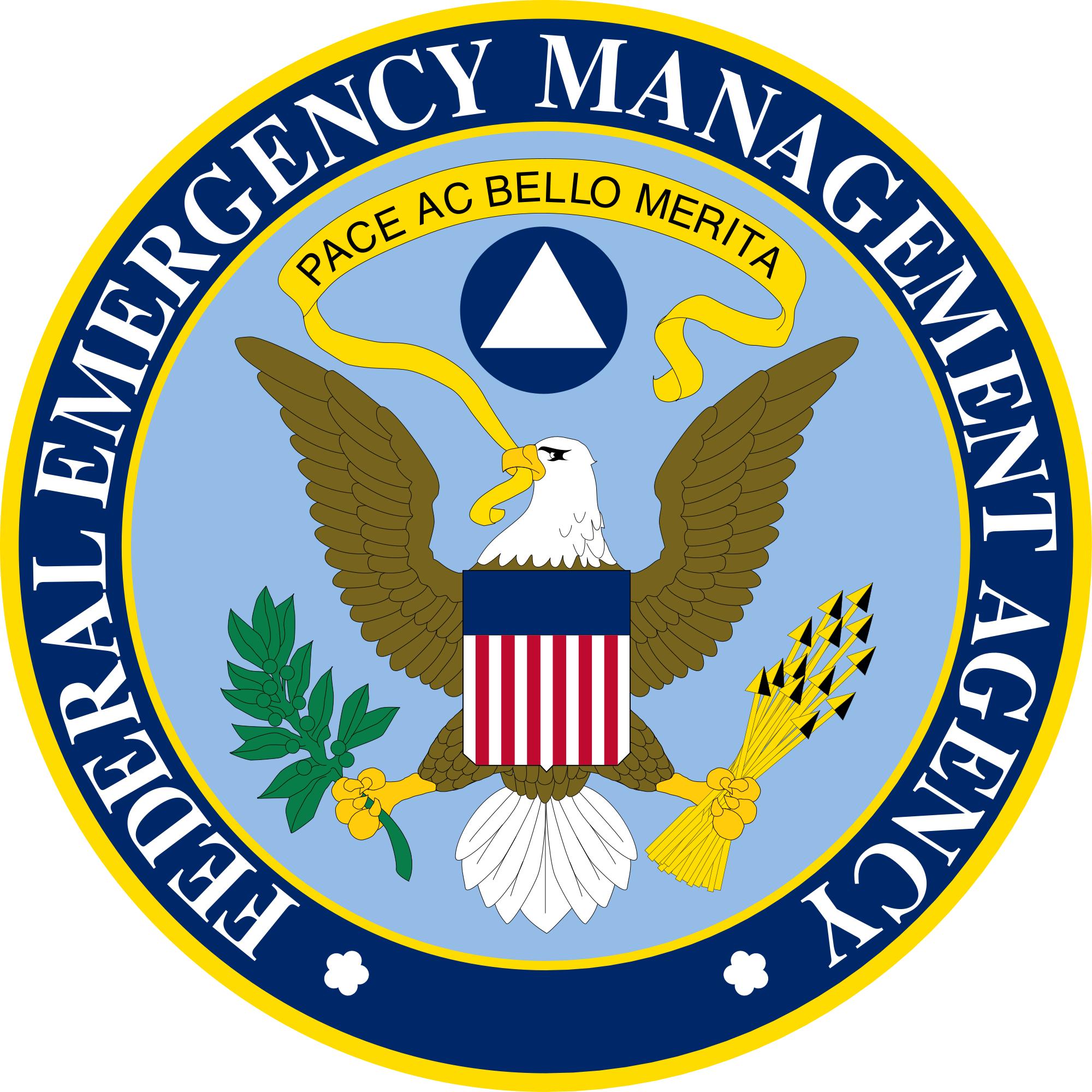 Messaging will be handled using digital modes, which can allow for the transmission of images as well as text, as a showcase for the full range of modern Amateur Radio technology. The American Red Cross will also have a NexGen Emergency Response Vehicle parked at W1AW in Connecticut as part of the training exercise, which will take place from 1330 to 1530 UTC.
Messaging will be handled using digital modes, which can allow for the transmission of images as well as text, as a showcase for the full range of modern Amateur Radio technology. The American Red Cross will also have a NexGen Emergency Response Vehicle parked at W1AW in Connecticut as part of the training exercise, which will take place from 1330 to 1530 UTC..jpg)
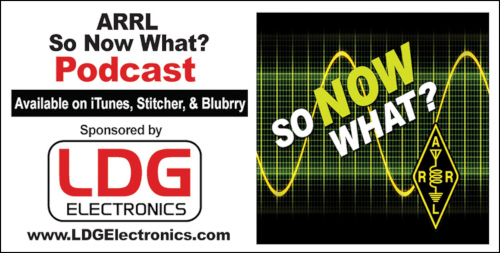 If you're a newly licensed Amateur Radio operator, chances are you have lots of questions. The biweekly So Now What? podcast has answers, offering insights from those who've been just where you are now. New episodes will be posted every other Thursday, alternating new-episode weeks with the
If you're a newly licensed Amateur Radio operator, chances are you have lots of questions. The biweekly So Now What? podcast has answers, offering insights from those who've been just where you are now. New episodes will be posted every other Thursday, alternating new-episode weeks with the 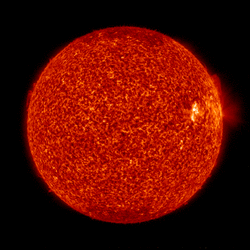 Predicted solar flux is 72 on May 16 - 18; 70 on May 19; 68 on May 20 - 22; 67 on May 23 - 29; 70, 72, 74, and 76 on May 30 - June 2; 77 on June 3 - 11; 75 on June 12; 72 on June 13 - 14; 70 on June 15; 69 on June 16 - 17; 68 on June 18; 67 on June 19 - 25, and 70, 72, 74, and 76 on June 26 - 29.
Predicted solar flux is 72 on May 16 - 18; 70 on May 19; 68 on May 20 - 22; 67 on May 23 - 29; 70, 72, 74, and 76 on May 30 - June 2; 77 on June 3 - 11; 75 on June 12; 72 on June 13 - 14; 70 on June 15; 69 on June 16 - 17; 68 on June 18; 67 on June 19 - 25, and 70, 72, 74, and 76 on June 26 - 29.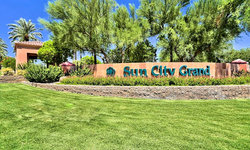 "The road to success took nearly a year of meetings, negotiations, and occasional setbacks driven by a team of dedicated amateurs who were persistent in reaching our goals," Bousman said in his article. "While our initial discussion points focused on the possibility of passage of the [Amateur Radio] Parity Act, we later shifted our focus to the value that Amateur Radio operators can bring to the community in the event of an emergency or crisis."
"The road to success took nearly a year of meetings, negotiations, and occasional setbacks driven by a team of dedicated amateurs who were persistent in reaching our goals," Bousman said in his article. "While our initial discussion points focused on the possibility of passage of the [Amateur Radio] Parity Act, we later shifted our focus to the value that Amateur Radio operators can bring to the community in the event of an emergency or crisis."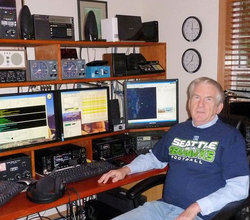
.jpg) in preparation for its Dayton appearance in a special "OSCAR Park" display commemorating AMSAT's 50th anniversary. He said it was a "rather humbling" experience.
in preparation for its Dayton appearance in a special "OSCAR Park" display commemorating AMSAT's 50th anniversary. He said it was a "rather humbling" experience.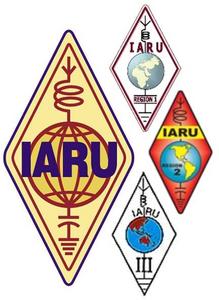 Group 5A1, responsible for amateur matters, is chaired by Dale Hughes, VK1DSH.
Group 5A1, responsible for amateur matters, is chaired by Dale Hughes, VK1DSH.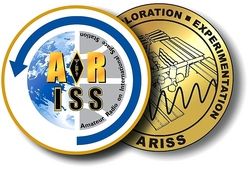 Attendees will also learn about the next-gen on-orbit hardware systems, updates on school activities, the ARISS initiative to fly ham radio on the human spaceflight lunar Gateway, how to maximize hams' opportunities to make ARISS connections and listen to the ISS crew in home stations, and meet special guests.
Attendees will also learn about the next-gen on-orbit hardware systems, updates on school activities, the ARISS initiative to fly ham radio on the human spaceflight lunar Gateway, how to maximize hams' opportunities to make ARISS connections and listen to the ISS crew in home stations, and meet special guests..jpg) An Amateur Radio weather warning alerted residents of an Ohio town to a possible tornado. A handful of Ohio
An Amateur Radio weather warning alerted residents of an Ohio town to a possible tornado. A handful of Ohio 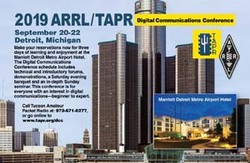 The ARRL/TAPR Digital Communications Conference (
The ARRL/TAPR Digital Communications Conference (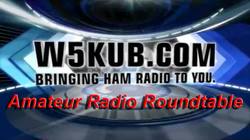 Amateur Radio Roundtable will Livestream 50 Hours of Dayton Hamvention®.
Amateur Radio Roundtable will Livestream 50 Hours of Dayton Hamvention®. 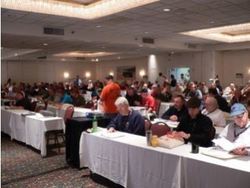 Selected Sessions of the 2019 Contest University (
Selected Sessions of the 2019 Contest University (







